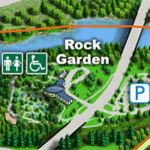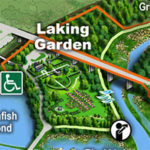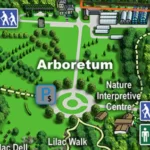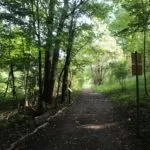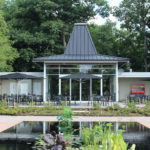| Membership | Price (+HST) |
|---|---|
| Single | $85/year |
| Single Plus | $120/year |
| Family | $130/year |
| Family Plus | $175/year |
| Contributing | $300/year |
| Supporting | $600/year |
| Sustaining | $1,000/year |
| Benefactor's Circle | $2,500/year |
| Director's Circle | $5,000/year |
| President's Circle | $10,000/year |
American Crabapple and Hamilton’s Draft Biodiversity Action Plan
By Tys Theysmeyer, Head of Natural Areas, Royal Botanical Gardens
Hamilton’s Draft Biodiversity Action Plan represents an approach intended to engage all of us from choices at home, to businesses, to City operations and planning. The Bald Eagle recovery, a species recently removed from the Endangered Species list is an example of what can happen with a focus on living more aligned with environmental sustainability. The waning populations of American Crabapple (Malus coronaria) is an example of the challenges most biodiversity faces.
The American Crabapple is an all but forgotten species, and one of only a few apples native to North America. I had the good fortune to stumble upon one along the RBG trail system a couple years ago, opening a world of history to me that I had never learned about. This includes their value as a food plant to First Nations and early settlers, and also the amazing flower bloom they have at this time of year. This opens up the questions of wow we have apples native to north American, and how come nobody talks about this?
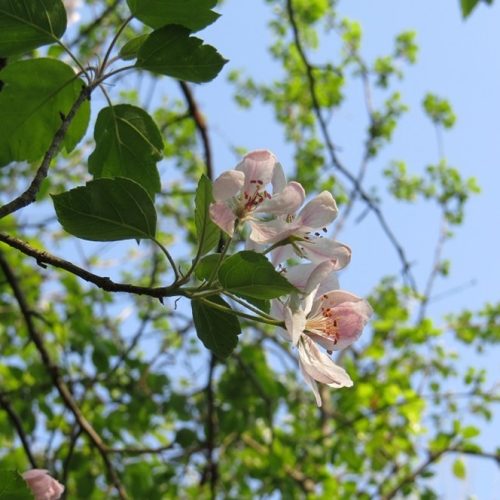
American Crabapple (Malus coronaria)
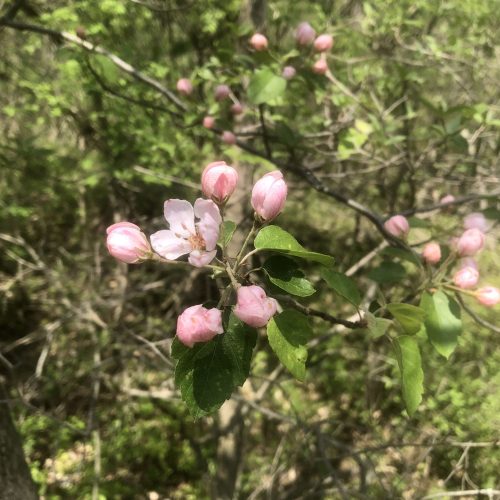
American Crabapple (Malus coronaria)
The American Crabapple is now extremely rare in Canada and is slowly being lost to the many challenges biodiversity faces. In this case it includes hybridization with some of the introduced crabapple varieties also. Other challenges include habitat loss to land conversion for urban, agricultural, and reforestation uses. The native crabapple is a meadow species, and to add to the challenge list, invasive plants such as Eurasian Common Buckthorn (Rhamnus cathartica) have been filling in the remaining habitat.
RBG has an extensive Eurasian crabapple collection in the Arboretum, and fortunately I have noted very few hybrid plants out in the natural areas. For overall biodiversity challenges add in water pollution and roads and wildlife crossing, and we have the essences of the challenges for sustainability of biodiversity and the thus the background for the draft Hamilton Biodiversity Action Plan. In the case of species such as crabapple, as with most species only a very short list short list of people have taken an interest in it, and perhaps your journey will lead you to discover some of the other remarkable gems of native biodiversity and take action.
Hamilton is recognized for both its rich biodiversity, encompassing various rural and urban habitats and a tremendous set of challenges to sustainability. A recent inventory identified approximately 2,020 species of plants and wildlife, with many native plants and many Eurasian invasive species. Recognizing the decline of biodiversity at local and global levels, the City of Hamilton, in collaboration with community environmental partners, has developed a draft Hamilton Biodiversity Action Plan (BAP) to protect, restore, enhance, and explore biodiversity.
The draft plan presented at the May 2nd City of Hamilton Planning Committee Meeting addresses significant threats such as invasive species, habitat loss, climate change, and pollution and outlines key priorities, including the establishment of an implementation framework, understanding the current state of biodiversity, long-term protection of natural areas, public awareness and stewardship, coordination for invasive species, enhancement of aquatic habitats, and considering biodiversity in municipal decision-making. Public consultation and stakeholder engagement are planned for the spring and summer of 2023, followed by revisions to the plan and final endorsement by the City Council.
More from the RBG Blog
Check out RBG’s blog for announcements, articles, and more from Canada’s largest botanical garden.
Want to be sure you hear first? Sign up for our weekly e-newsletter to hear about upcoming events, weekend activities, articles, and more!



